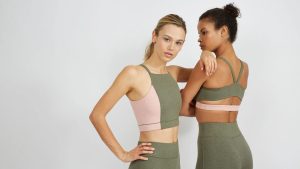Step through the door and the name comes first.The Webster. It’s a compact phrase that suggests a place, a persona, perhaps even a promise. But names, like rooms, are arranged with intention. To understand what stands behind this one, we have to look past the façade and into the scaffolding: the decisions, influences, and encounters that built it.
This article traces The Webster from its origins to its present identity, and onward to its wider impact.It asks how an idea became a locus-who shaped it, what choices gave it its voice, and why that voice resonates with the audiences it serves. Along the way, it considers both the visible elements-design, partnerships, public presence-and the quieter mechanics of strategy, stewardship, and community.
Neither hagiography nor takedown, what follows is a guided walk-through. We’ll map the early blueprint, examine the signatures that distinguish it, and measure its footprint with clear eyes. In short: inside The Webster, from the first spark to the afterglow.
From Miami Art Deco roots to a global fashion address
Born in the glow of pastel geometries and oceanlight, the brand’s identity was cast inside a historic Art Deco shell-where curves, terrazzo, and lacquered banisters became more than backdrops: they set the rhythm for a new way to discover fashion. Under the eye of Laure Hériard Dubreuil, the flagship distilled runway energy into a sun-washed, salon-like experience, pairing directional designers with resort nonchalance. The result feels cinematic yet precise: a choreography of color, texture, and scent that turns curation into a living scene rather than a static display.
- Architecture as editor: heritage lines frame each rack, making silhouettes read like chapters.
- Palette as signature: soft pinks and aquatic tones echo shoreline ease across seasonal shifts.
- Service as ritual: atelier-level alterations, private previews, and one-to-one styling.
- Community as canvas: artist installations, capsule drops, and neighborhood collaborations.
As the map widened, each new door carried the same backbone-immersive curation, gallery-like pacing, and site-specific storytelling-while absorbing local cadence. West Coast light invited breezier capsules; New york’s vertical tempo sharpened tailoring; Texas scale welcomed bold statements. The effect is a network of distinct rooms speaking one language: intimacy, rarity, and an editorial eye that makes every visit feel both immediate and collectible.
| City | Signature Detail |
|---|---|
| Miami beach | Iconic pink, Deco flagship energy |
| Bal Harbour | Resort-luxe, gallery pacing |
| New York (SoHo) | Townhouse intimacy, art-led edits |
| Los Angeles | Sunlit capsules, coastal ease |
| Houston | Bold statements, salon service |

Defining the brand: curation, visual codes, and immersive retail experience
The Webster’s identity is built on a precise, almost editorial edit that balances heritage houses with studio-fresh voices. Pieces are chosen for how they speak to one another-color families echo across rails, textures answer textures, and silhouettes form a considered rhythm-so the assortment reads less like inventory and more like a narrative. The result is a brand language of seasonless luxury, limited-run exclusives, and collaborations that reward attention to cut, finish, and mood rather than logo alone.
- Curation logic: silhouette innovation, tactile craftsmanship, chromatic dialog
- Mix philosophy: legacy maisons alongside directional independents
- Edit outcome: cohesive capsules, smart layerability, long-wear relevance
- Proof points: limited drops, trunk shows, designer-led capsules
| Visual code | Material/Color | Purpose |
| Signature pink | Powder and coral tones | Instant brand recall |
| art Deco lines | Curves, stepped details | Heritage context |
| Warm metals | Brass accents | Light and luxe cues |
| Stone underfoot | Terrazzo/marble | Gallery calm |
| Scent + sound | soft woods, low-tempo | Immersive pacing |
In-store, the experience is choreographed to feel editorial yet personal: lighting frames texture, music slows decision-making, and seating islands turn trying-on into a considered pause. Associates operate as curators-mapping wardrobes, assembling micro-capsules, and adjusting the arc from discovery to decision. Immersion comes through sensory layering and hospitality: private styling appointments, art and design installations, localized product stories, and service touchpoints that end with concierge-like packaging rather than a transactional exit.

The operating blueprint: assortment cadence,collaboration criteria,clienteling tactics,and staffing models by traffic patterns
The store’s operating rhythm favors a layered assortment cadence: fast “micro-edits” that refresh weekly,capsule drops tied to cultural moments each month,and seasonal arcs that anchor the narrative. Allocation follows signal strength-sell-through velocity, wishlist density, and stylist requests-balancing slow-burn couture with burst-driven street capsules. Collaborations filter through a transparent criteria grid, ensuring every partner expands the brand’s cultural surface without diluting its point of view.
- Story fit: A narrative that amplifies identity, not noise.
- Craft caliber: Materials and make that justify premium pricing.
- audience overlap: Shared but not saturated communities.
- Drop agility: Ability to prototype and ship on cadence.
- Sustainability proof: Traceable inputs and responsible volumes.
- Co-design openness: Willingness to iterate with in-house styling.
clienteling is designed as a quiet architecture of care: data-light, relationship-heavy, and occasion-first. Stylists maintain living profiles-size maps, fabric sensitivities, travel calendars-and orchestrate private previews that land just ahead of life moments. Staffing flexes to the street, with roles rotating by footfall pattern so that discovery never collides with checkout friction.
- Occasion tagging: Wardrobe plans for events, climates, and trips.
- Preview windows: 48-72 hour first looks via text, video, and in-suite racks.
- Concierge channels: WhatsApp, private links, and same-day courier loops.
- Styling memos: Mix-and-match notes, care tips, and reorder shortcuts.
- Pulse gifts: Low-volume tokens tied to milestones to deepen recall.
| Traffic pattern | Staffing mix | Clienteling focus | KPI snapshot |
|---|---|---|---|
| Weekday off-peak | 1 Lead Stylist, 1 Junior, 1 Digital Ops | Profile builds, private try-ons | AOV ↑, profiles created |
| Lunch rush | 2 Floor Stylists, 1 Cash Wrap, 1 Greeter | Fast edits, hold racks | Conversion %, queue time ↓ |
| Event night | 3 Stylists, 1 Tailor, 1 Content | Look completion, on-site alterations | Units/tx ↑, UPT ↑ |
| holiday surge | 4 Stylists, 2 Cash, 1 Runner | Gift pathways, wrap & ship | Sell-through %, returns ↓ |

Measurable impact and next steps: cultural relevance, community value, KPIs to track, and recommendations for sustainable growth
Cultural relevance lives where curation meets place: city-specific capsules, bilingual storytelling, and artist-led activations that mirror neighborhood rhythms. To prove community value, align identity with measurable outcomes-local footfall, equitable royalties, positive press sentiment, and deeper clienteling among diaspora networks. The throughline is reciprocity: programming that funds creatives, retail that uplifts adjacent businesses, and content that archives each store’s micro-culture while growing brand equity.
| KPI | 12‑Month Target | Current Baseline |
|---|---|---|
| Local traffic share (in-store, ZIPs ≤10mi) | 60% | 41% |
| Community event attendance (avg/event) | 250 | 140 |
| Artist-collab sell‑through (8 weeks) | 85% | 62% |
| Repeat purchase rate (12 mo) | 35% | 24% |
| Clienteling NPS | 70 | 56 |
| Social share of voice (category) | 8% | 5% |
| Packaging emissions per order (kg CO₂e) | ≤1.0 | 1.8 |
| Supplier diversity spend | 20% | 9% |
- Resident Curators: fund city-based curators to co-program windows, playlists, and talks; tie fees to attendance and sell‑through of their edits.
- Community Panels: quarterly listening sessions with local artists,stylists,and small businesses; publish commitments and track delivery rate.
- Circular Services: repair, resale drops, and archival rentals; measure trade‑in value retained locally and reduced returns.
- Local‑First Drops: geofenced early access for nearby members; KPI: waitlist conversion and repeat visits within 30 days.
- Impact Dashboard: automate POS, e‑comm, and event data into a shared KPI board; monthly readouts with store‑level action items.
- Low‑Impact Ops: biodegradable packaging, consolidated shipments, greener last‑mile partners; track CO₂e/order and damage rate.
- Talent Pipelines: paid internships with public schools and arts orgs; KPI: placement rate and 12‑month retention.
- Inclusive Standards: bilingual programming, ADA‑forward layouts, sizeless visual cues, and representative casting; monitor accessibility scores and sentiment.
Next steps: assign OKR owners per market, set quarterly targets against the above KPIs, and publish a brief impact memo after each season. Hold the brand to a simple rule-expand only where cultural partnerships precede sales forecasts. This cadence protects identity, compounds trust, and grows sustainably by making every store a civic collaborator as much as a retail destination.
The Way Forward
In tracing The Webster’s beginnings, we find fewer origin myths than purposeful choices-of place, pace, and point of view. Its identity, assembled over time, reads less like a logo and more like a lexicon: entries revised, meanings layered, context always in play. And its impact, whether measured in sales, scene, or subtle shifts in taste, sits not at the edge of culture but in the circuitry that connects makers, audiences, and moments.If anything endures, it is the tension that keeps it alive: between local roots and global reach, between spectacle and study, between what is curated and what emerges on its own.Institutions that matter rarely remain singular; they refract. The Webster’s story-so far-is one of continuity by reinvention, of hospitality as stance, of a brand that behaves like a conversation.
Stepping back outside, the outlines become clearer. Origins explain the grammar. Identity shapes the voice. Impact is the echo that travels farther than the room. The next chapter will be written, as the last ones were, by decisions at once small and cumulative. For now, it’s enough to note that inside The Webster we have not just a place, but a practice-one that keeps translating taste into time, and time back into meaning.



